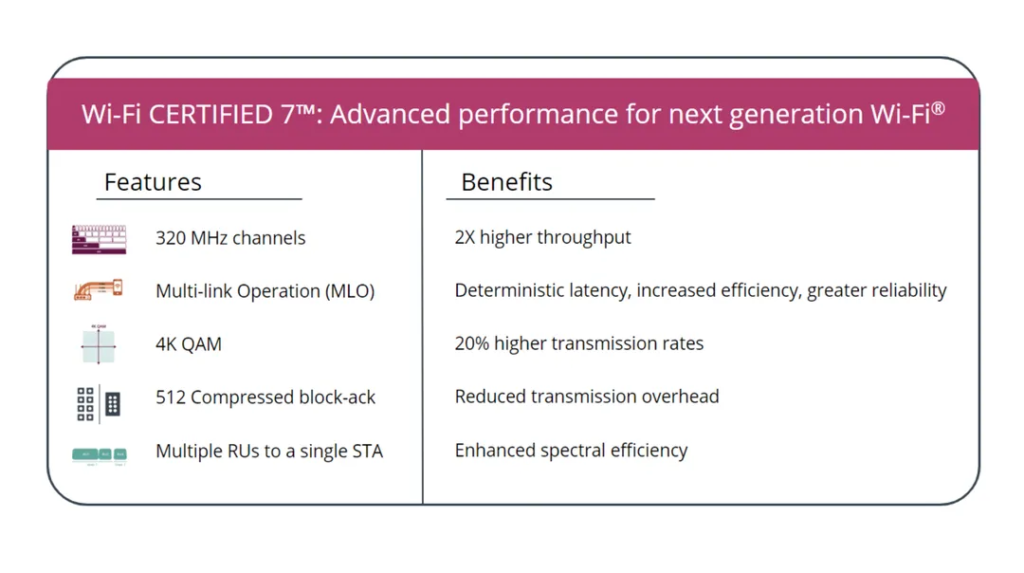The Wi-Fi Alliance has begun to certify Wi-Fi 7 products to ensure their compatibility and quality.
The next generation of wireless home internet, known as WiFi 7, is now officially certified by the Wi-Fi Alliance. Wi-Fi 7 devices are guaranteed to work together with certification. By 2024, new gadgets such as laptops, phones, and routers will be equipped with the standard, potentially offering significant speed and efficiency improvements over Wi-Fi 6E.
According to the alliance’s announcement, Wi-Fi 7 will outperform current standards for things like high-bandwidth streaming and low-latency wireless gaming. This is important because, as virtual reality becomes increasingly popular, more people are commuting to their kitchen tables or home offices to communicate with coworkers over Zoom. According to The Verge, Kevin Robinson, CEO of the Wi-Fi Alliance, Wi-Fi 7 is the “first generation built from the ground up” for the 6GHz band, which is a quicker and wider range of wireless spectrum that was initially utilized by Wi-Fi 6E devices.
Indeed, there are now Wi-Fi 7 routers available, as you would be inclined to point out. Companies like Netgear, TP-Link, and Eero have already introduced routers on the market; the first two did so a few months ago. The alliance’s certified product locator does not list Eero’s current Wi-Fi 6 routers, thus they might or might not get certified. Although certification enables businesses to ensure that they will, it does not imply that they will not function well with Wi-Fi 7 devices down the road.

Aside from certification, nothing regarding Wi-Fi 7 has changed since we released our October guide. In comparison to the fastest devices on the Wi-Fi 5, 6, or 6E standards, it still offers double the channel capacity (from 160MHz to 320MHz), which implies that wireless downloads at speeds of more than two gigabits per second are possible.
Additionally, Multi-Link Operation (MLO), which is essentially wireless link aggregation bonded connections spread across two or three of the 2.4 GHz, 5 GHz, and 6 GHz bands will make its debut. This will increase speed and stability because you won’t have to reconnect to access another band if you walk out of range of one.
MLO has an additional latency advantage. Device connections are typically limited by airtime, which is the amount of time needed for the router to cycle through the packets that are waiting to be sent across the network. Robinson stated to The Verge that there is “a very, very high probability of getting that packet out immediately” when all three bands are accessible at the same time.
If your network is spotty, that may be a major issue, albeit not all routers will be able to connect to all three bands simultaneously, according to Robinson. For example, a less expensive router could only be able to join two bands at once. That’s an improvement over the current situation, where the finest routers still only allow one connection per device, but you’ll probably have to pay more if you want to make use of all that the Wi-Fi 7 standard has to offer.
The alliance claims that additional features of the new standard will result in increased throughput, efficiency, and reliability. Additionally, Wi-Fi 7 devices will be backward compatible with earlier Wi-Fi versions. New capabilities on a Wi-Fi 7 router won’t immediately help older devices, but new laptops and phones soon will. However, for the time being, it’s more beneficial to consider a new Wi-Fi 7 router as an improved infrastructure and a future strategy.



